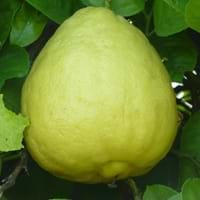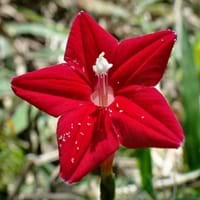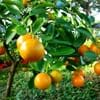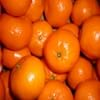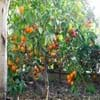Life Span
Perennial
Annual and Perennial
Type
Fruit
Bulb or Corm or Tuber
Origin
Hybrid origin, Asia
South Africa
Types
Not Available
Not Available
Number of Varieties
Not Available
Habitat
Lawn
Subtropical climates, subtropical regions
USDA Hardiness Zone
11-12
9-10
Sunset Zone
H1, H2, 8, 9, 12, 13, 14, 15, 16, 17, 18, 19, 20, 21, 22, 23, 24
21,22
Habit
Oval or Rounded
Mat-forming
Flower Color
White, Red, Purple
Red, Magenta
Flower Color Modifier
Bicolor
Bicolor
Fruit Color
Yellow, Yellow green
Not Available
Leaf Color in Spring
Dark Green
Gray Green
Leaf Color in Summer
Dark Green
Light Green
Leaf Color in Fall
Dark Green
Several shades of Green
Leaf Color in Winter
Light Green
Light Green
Leaf Shape
Oval
Long, Alternate
Plant Season
Spring, Summer, Fall, Winter
Spring, Summer
Sunlight
Full Sun, Partial Sun
Full Sun
Growth Rate
Medium
Medium
Type of Soil
Loam, Sand
Loam, Sand
The pH of Soil
Acidic, Neutral
Acidic, Neutral
Soil Drainage
Well drained
Well drained
Bloom Time
Indeterminate
Late Spring, Early Summer, Summer
Tolerances
Drought
Drought
Where to Plant?
Ground, Pot
Ground
How to Plant?
Cuttings, Grafting, Seedlings
Seedlings
Plant Maintenance
Medium
Medium
Watering Requirements
Reduce watering in winter, Water frequently while growing
Needs good drainage, Needs high amount of water
In Summer
Lots of watering
Lots of watering
In Spring
Moderate
Moderate
In Winter
Average Water
Average Water
Soil pH
Acidic, Neutral
Acidic, Neutral
Soil Type
Loam, Sand
Loam, Sand
Soil Drainage Capacity
Well drained
Well drained
Sun Exposure
Full Sun, Partial Sun
Full Sun
Pruning
Remove damaged leaves, Remove dead branches, Remove dead leaves
No pruning needed, Prune to control growth, Remove damaged leaves, Remove dead branches, Remove dead leaves
Fertilizers
All-Purpose Liquid Fertilizer
All-Purpose Liquid Fertilizer, High-phosphorous fertilizers used
Pests and Diseases
Leafminer
Pests and diseases free
Plant Tolerance
Drought
Drought
Flower Petal Number
Single
Single
Fragrant Flower
Yes
Not Available
Fragrant Bark/Stem
Yes
No
Showy Foliage
No
Not Available
Foliage Texture
Medium
Fine
Foliage Sheen
Glossy
Matte
Attracts
Not Available
Butterflies, Hummingbirds
Allergy
Anaphylaxis, Oral Allergy
Unknown
Aesthetic Uses
Bonsai
Beautification, Ornamental use, Showy Purposes, small hedge
Beauty Benefits
Not Available
Not Available
Environmental Uses
Air purification
Air purification
Medicinal Uses
Astringent, Diuretic, Febrifuge
Anti-fungal, Purgative
Part of Plant Used
Fruits, Pulp, Tree trunks
Leaves
Other Uses
Cosmetics, Disinfectant, Edible syrup
Beneficial species for attracting pollinators
Used As Indoor Plant
Yes
No
Used As Outdoor Plant
Yes
Yes
Garden Design
Container, Edible, Fruit / Fruit Tree, Houseplant, Topiary / Bonsai / Espalier, Tropical
Alpine, Container, Rock Garden / Wall, Tropical
Botanical Name
CITRUS limon 'Ponderosa'
Ipomoea quamoclit
Common Name
Lemon, Ponderosa Lemon
star glory , hummingbird vine
In Hindi
Ponderosa Lemon
Kunjlata
In German
Ponderosa Zitrone
Ipomoea quamoclit
In French
Citron Ponderosa
Ipomoea quamoclit
In Spanish
Ponderosa Lemon
Ipomoea quamoclit
In Greek
Ponderosa Lemon
Ipomoea quamoclit
In Portuguese
Ponderosa Lemon
Ipomoea quamoclit
In Polish
Ponderosa Lemon
Ipomoea quamoclit
In Latin
Ponderosa Lemon
Ipomoea quamoclit
Phylum
Not Available
Magnoliophyta
Class
Magnoliopsida
Magnoliopsida
Order
Sapindales
Solanales
Family
Rutaceae
Amaryllidaceae
Clade
Angiosperms, Eudicots, Rosids
Angiosperms, Asterids, Eudicots
Subfamily
Aurantioideae
Not Available
Number of Species
Not Available
Properties of Ponderosa Lemon and Cypress Vine
Wondering what are the properties of Ponderosa Lemon and Cypress Vine? We provide you with everything About Ponderosa Lemon and Cypress Vine. Ponderosa Lemon has thorns and Cypress Vine doesn't have thorns. Also Ponderosa Lemon does not have fragrant flowers. Ponderosa Lemon has allergic reactions like Anaphylaxis and Oral Allergy and Cypress Vine has allergic reactions like Anaphylaxis and Oral Allergy. Compare all the properties and characteristics of these two plants. Find out which of these plant can be used as indoor plant. If you are interested to decorate your house and garden, find out aesthetic uses, compare them and select the plant which will beautify your surrounding. Along with beautification, try comparing medicinal and edible uses of Ponderosa Lemon and Cypress Vine and you can choose the plant having best and most benefits.
Season and Care of Ponderosa Lemon and Cypress Vine
Season and care of Ponderosa Lemon and Cypress Vine is important to know. While considering everything about Ponderosa Lemon and Cypress Vine Care, growing season is an essential factor. Ponderosa Lemon season is Spring, Summer, Fall and Winter and Cypress Vine season is Spring, Summer, Fall and Winter. The type of soil for Ponderosa Lemon is Loam, Sand and for Cypress Vine is Loam, Sand while the PH of soil for Ponderosa Lemon is Acidic, Neutral and for Cypress Vine is Acidic, Neutral.
Ponderosa Lemon and Cypress Vine Physical Information
Ponderosa Lemon and Cypress Vine physical information is very important for comparison. Ponderosa Lemon height is 120.00 cm and width 150.00 cm whereas Cypress Vine height is 7.60 cm and width 7.60 cm. The color specification of Ponderosa Lemon and Cypress Vine are as follows:
Ponderosa Lemon flower color: White, Red and Purple
Ponderosa Lemon leaf color: Dark Green
Cypress Vine flower color: Red and Magenta
- Cypress Vine leaf color: Gray Green
Care of Ponderosa Lemon and Cypress Vine
Care of Ponderosa Lemon and Cypress Vine include pruning, fertilizers, watering etc. Ponderosa Lemon pruning is done Remove damaged leaves, Remove dead branches and Remove dead leaves and Cypress Vine pruning is done No pruning needed, Prune to control growth, Remove damaged leaves, Remove dead branches and Remove dead leaves. In summer Ponderosa Lemon needs Lots of watering and in winter, it needs Average Water. Whereas, in summer Cypress Vine needs Lots of watering and in winter, it needs Average Water.
